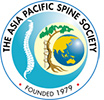Lumbar Corpectomy
Anterior Lumbar Corpectomy and Fusion is a surgical technique performed to remove the vertebral bone or disc material between the vertebrae to alleviate pressure on the spinal cord and spinal nerves (decompression) in the lumbar (low back) region.
The term corpectomy originates from the Latin word ‘corpus’ which means ‘body’ and the word ‘ectomy’ means ‘removal’. Spinal fusion is essential for spinal stability after the removal of vertebral bone and disc material to relieve the compression over the neural structure.
Indications
Anterior lumbar corpectomy and fusion is recommended when non-surgical treatment options fail to reduce the symptoms.
Nerve compression in the lower back usually leads to back pain, numbness or weakness extending into the hips, buttocks and legs.
Common causes of spinal nerve compression are:
- Degenerative spinal conditions such as herniated discs
- Spinal fractures
- Tumors
- Infection
Before recommending surgery, the surgeon considers various factors such as age, condition to be treated, health, lifestyle, and the activity level of the patient.
Surgical procedure
For the procedure, the surgeon makes an incision in the side of the abdomen and retracts the soft tissues such as muscles to gain visibility to the spine. A portion of vertebral body and intervertebral disc is removed to access the involved neural structure. The source of compression is removed and the compressed nerves released. During the fusion of two adjacent vertebrae, bone graft or bone graft substitute is inserted between the vertebrae at the decompression site to promote healing and to preserve the normal disc height. Implant material such as rods, plates and screws are fixed to the treated vertebra (e) to deliver additional support and stability during the fusion and healing process. After the procedure, the surgeon realigns the soft tissues and closes the incision.
Recovery
Following a Lumbar Corpectomy and Fusion, you may observe an immediate improvement of some or all symptoms or sometimes a gradual improvement of the symptoms also may be seen.
The duration of hospitalization depends on the treatment rendered. At the end of the first day of the surgery you are allowed to move and walk around the hospital. Returning back to your daily life or to work depends on how well you are healing and the type of work or activity level.
Follow your spinal surgeon’s instructions regarding the proper recovery program and instructions to augment the healing process for a successful recovery.
Risks or complications
The complications of the surgery include infection, nerve damage, blood clots or blood loss or bowel and bladder problems and any problem associated with anesthesia. The underlying risk of spinal fusion surgery is failure of fusion of vertebral bone and bone graft which usually requires an additional surgery.
Talk to your spine surgeon if you have any concerns or queries regarding Anterior Lumbar Corpectomy and Fusion.
Cervical Corpectomy and Strut Graft
The cervical spine comprises the first 7 vertebrae of the spinal column. The vertebrae are separated from one another by shock absorbing pads called intervertebral discs. Over time, the discs can become worn out resulting in neck pain. Most patients with neck pain can be managed conservatively. However, surgery needs to be considered when the degenerative changes of the cervical spine exert excessive pressure on the spinal cord.
A cervical corpectomy and strut graft is a surgical procedure aimed at relieving the spinal cord compression by removal of the degenerated vertebrae and replacement with a bone graft. A corpectomy is indicated in compression of the spinal cord leading to spinal stenosis or cervical myelopathy.
Procedure
Your surgeon will make an incision in the front of your neck to reach the cervical spine. An X-ray is taken to ensure the affected vertebrae and discs are located. Once confirmed, the affected vertebrae and discs are removed along with any bone spurs around the vertebrae.
A cervical fusion is performed after a corpectomy. In cervical fusion, the space left after removal of the vertebral body is reconstructed with a bone graft to provide stability to the spine. The graft may be taken either from the patient or another individual and is usually taken from the small bone in the leg. The graft holds the vertebrae apart while the healing occurs and the vertebrae fuse. A metal plate and screws are used to hold the vertebrae and the bone graft in place. Some patients are placed in a halo jacket to restrict the movement of the head during the healing process.
Some of the complications associated with corpectomy include subsequent pain, impaired healing, and a possible need for additional surgery.
Following surgery, patients will need to limit their activities to avoid strain on the healing vertebrae. Physical therapy may be initiated to improve neck strength and flexibility. The intensity of physical therapy may be increased after the cervical fusion has healed sufficiently.















